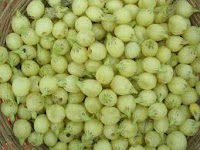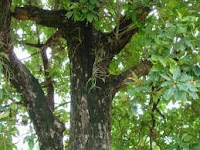Masterwort was called “the divine remedy” in the Middle Ages, and believed to be a wonder herb, capable of curing most ailments. Its leaves were used to flavour soups and its root is still used to make Meisterwurzbrand, a liqueur, in the Tyrol region of the Alps .
It is a member of the Apiaceae or Umbelliferae family of plants, and as such is related to the carrot, celeriac, lovage, opoponax, Alexanders (black lovage), thapsia, cow parsley, sweet Cicely, hemlock, pignuts, lesser and greater burnet saxifrage, ground elder, rock samphire, fennel, sea holly and sanicle, to name just a few of its relatives. It is a close relative of angelica, for which it is sometimes mistaken as it smells very similar. Unfortunately masterwort has a sap in its aerial parts which can cause dermatitis on contact with the skin. It was much used at one time and being a native of Southern Europe , was cultivated in monastery gardens in Britain and Ireland . It is now naturalized in these countries. Its botanical synonym is Imperatoria ostruthium, and another English name for it is Hog’s fennel.
 Hildegard von Bingen mentions it in glowing terms in her “Physica” written between 1150 and 1160, as Astrenica and it was also previously known as Magistranta. All its names reflect the way herbalists thought of it – a powerful remedy.
Hildegard von Bingen mentions it in glowing terms in her “Physica” written between 1150 and 1160, as Astrenica and it was also previously known as Magistranta. All its names reflect the way herbalists thought of it – a powerful remedy. It is said to contain myristicin which is supposed to be a psychotropic, found in nutmeg, and responsible for euphoria. The root has been chewed to relieve toothache, and in the USA was once used to calm hysteria and delirium tremens. This is interesting as the root of masterwort was thought to impart strength and courage to its bearer, as well as protection, which was a good thing, as it was believed that if the root were scattered around, any lurking evil spirits would manifest themselves.
 The root is the main part used in medicine, and this is said to be best gathered in spring or autumn and dried for later use.
The root is the main part used in medicine, and this is said to be best gathered in spring or autumn and dried for later use. Nicholas Culpeper, the English herbalist, writing in the 17th century had this to say about it:-
“Government and virtues. It is an herb of Mars. The root of Masterwort is hotter than pepper, and very available in cold griefs and diseases both of the stomach and body, dissolving very powerfully upwards and downwards. It is also used in a decoction with wine against all cold rheums, distillations upon the lungs, or shortness of breath, to be taken morning and evening. It also provokes urine, and helps to break the stone, and expel the gravel from the kidneys; provokes women's courses, and expels the dead birth. It is singularly good for strangling of the mother, and other such like feminine diseases. It is effectual also against the dropsy, cramps, and falling sickness; for the decoction in wine being gargled in the mouth, draws down much water and phlegm, from the brain, purging and easing it of what oppresses it. It is of a rare quality against all sorts of cold poison, to be taken as there is cause; it provokes sweat. But lest the taste hereof, or of the seed (which works to the like effect, though not so powerfully) should be too offensive, the best way is to take the water distilled both from the herb and root. The juice hereof dropped, or tents dipped therein, and applied either to green wounds or filthy rotten ulcers, and those that come by envenomed weapons, doth soon cleanse and heal them. The same is also very good to help the gout coming of a cold causey.”
 The infusion or tisane of the chopped root is said to be good for migraines, and it has also been used for asthma. There has not been much research into this plant except by manufacturers of cosmetics who seem to think along with the ancient Romans that it can keep the skin youthful. They were so enamoured of masterwort that some say they were responsible for introducing it to the rest of
The infusion or tisane of the chopped root is said to be good for migraines, and it has also been used for asthma. There has not been much research into this plant except by manufacturers of cosmetics who seem to think along with the ancient Romans that it can keep the skin youthful. They were so enamoured of masterwort that some say they were responsible for introducing it to the rest of 

















































